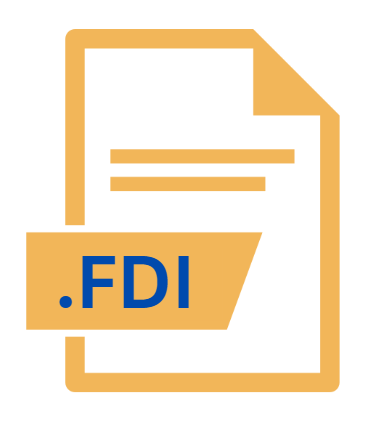.FDI File Extension

Amiga Formatted Disk Image
| Developer | Vincent Joguin |
| Popularity | |
| Category | Disk Image Files |
| Format | .FDI |
| Cross Platform | Update Soon |
What is an FDI file?
The .FDI file extension refers to a disk image file format used by Amiga computers. Specifically, it stands for “Formatted Disk Image” and is designed to replicate the data from an Amiga diskette in a digital format.
This allows users to archive, emulate, and transfer software or data that was originally stored on Amiga disks.
More Information.
The initial purpose of the .FDI file format was to create exact digital copies of Amiga disks for archival and emulation purposes.
The format allows users to replicate the contents of an Amiga diskette, including its file system and data structures, into a single file.
This was particularly useful for preserving software, games, and other data from the Amiga platform, which was no longer in widespread use.
Over time, as Amiga emulators and preservation projects grew, the .FDI format became a key component in maintaining access to legacy Amiga software.
It provided a straightforward way to archive old software and make it accessible to modern users through emulation.
Origin Of This File.
The .FDI file format originated in the Amiga computing era, a popular home computer system from the late 1980s and early 1990s.
Developed by Commodore International, the Amiga computers were known for their advanced graphics and sound capabilities, which made them popular among gamers, developers, and multimedia enthusiasts.
As the Amiga hardware became obsolete, enthusiasts and collectors sought ways to preserve and continue using Amiga software and data.
The .FDI format emerged as a solution to create digital replicas of physical Amiga diskettes, thus extending the life and usability of Amiga software.
File Structure Technical Specification.
The .FDI file format is a disk image file that contains a sector-by-sector copy of an Amiga floppy disk. The file structure of an .FDI file is designed to mirror the layout of the original diskette. Key technical specifications include:
- Sector Organization: An .FDI file replicates the sectors of the original Amiga disk. Amiga diskettes typically use a 880 KB or 1760 KB format, depending on whether they are single or double density.
- File System: The .FDI format includes the file system used by AmigaOS, such as the Fast File System (FFS). This allows the disk image to maintain the same file structure and data organization as the original disk.
- Metadata: The file includes metadata about the disk’s formatting and data layout, ensuring that the digital copy is an accurate representation of the original media.
- Compression: Some .FDI files may employ compression techniques to reduce file size, but the primary format itself is typically uncompressed.
How to Convert the File?
Converting .FDI files to other formats or extracting their contents can be done using various tools. The conversion process typically involves the following steps:
- Choose Conversion Software: Select a tool that supports .FDI files. Examples include Amiga disk image utilities like XFD and WinUAE.
- Load the .FDI File: Open the .FDI file in the chosen software. Some tools provide graphical interfaces, while others operate through command-line interfaces.
- Select the Desired Output Format: Depending on your needs, you might want to convert the .FDI file to other disk image formats, such as .ADF (Amiga Disk File) or .DMS (Disk Masher System).
- Perform the Conversion: Follow the software’s instructions to complete the conversion. This typically involves specifying output settings and executing the conversion process.
- Verify the Output: After conversion, check the output file to ensure it accurately represents the original data.
Advantages And Disadvantages.
Advantages:
- Preservation: The .FDI format is an effective way to preserve Amiga software and data for future generations. It ensures that legacy software remains accessible even after the original hardware has become obsolete.
- Emulation Compatibility: The .FDI format is widely supported by Amiga emulators, allowing users to run old software on modern computers without needing the original hardware.
- Archiving: It provides a straightforward method for archiving Amiga software collections. Users can store .FDI files on modern storage media and easily access them when needed.
Disadvantages:
- Compatibility: While the .FDI format is widely used, it may not be supported by all Amiga emulators or disk image tools. Users might need specific software or plugins to work with .FDI files.
- File Size: Depending on the disk’s content and any applied compression, .FDI files can be quite large. This can make storage and transfer more cumbersome, especially for large collections.
- Obsolescence: As the Amiga platform continues to age, finding compatible software and hardware to manage .FDI files may become increasingly difficult.
How to Open FDI?
Open In Windows
- Use Amiga emulators like WinUAE, which support .FDI files directly. You can load the .FDI file as a virtual disk within the emulator.
- Tools like XFD or DiskSalv can also be used for managing .FDI files.
Open In Linux
- Amiga emulators such as FS-UAE and UAE are available for Linux and support .FDI files. These emulators can be used to open and run .FDI files.
- Disk image tools like XFD can be used for conversion and management of .FDI files.
Open In MAC
- Similar to Windows, you can use Amiga emulators like FS-UAE or E-UAE to open .FDI files. These emulators offer support for various disk image formats, including .FDI.
- You can also use conversion tools available for macOS to convert .FDI files to other formats.













